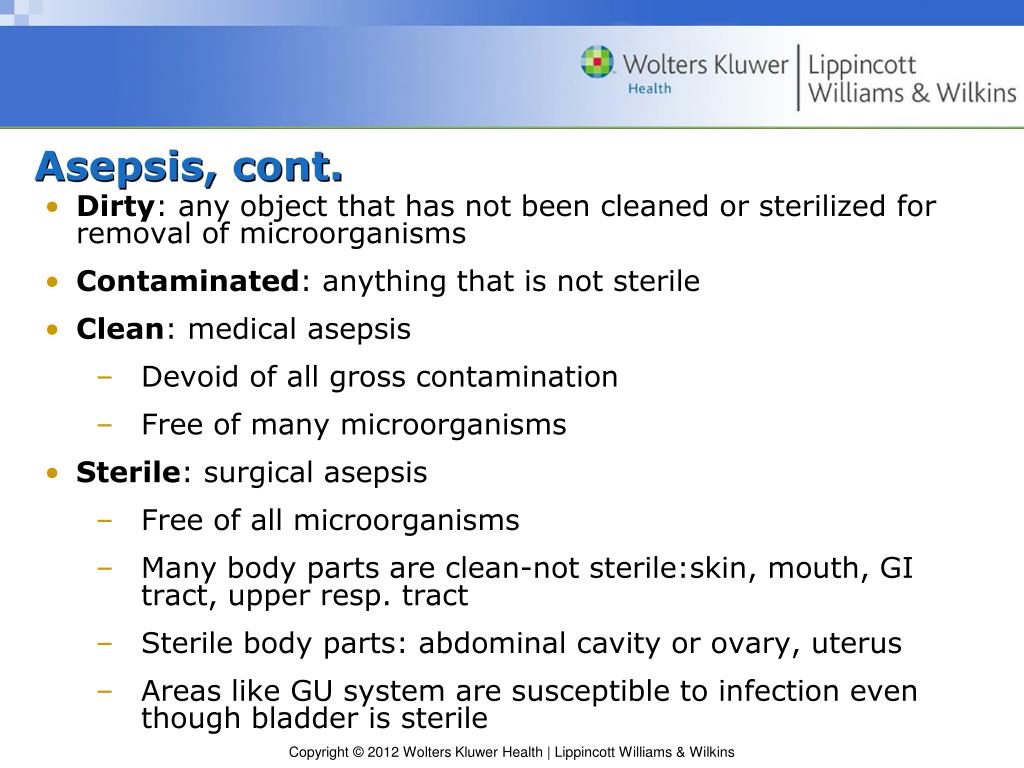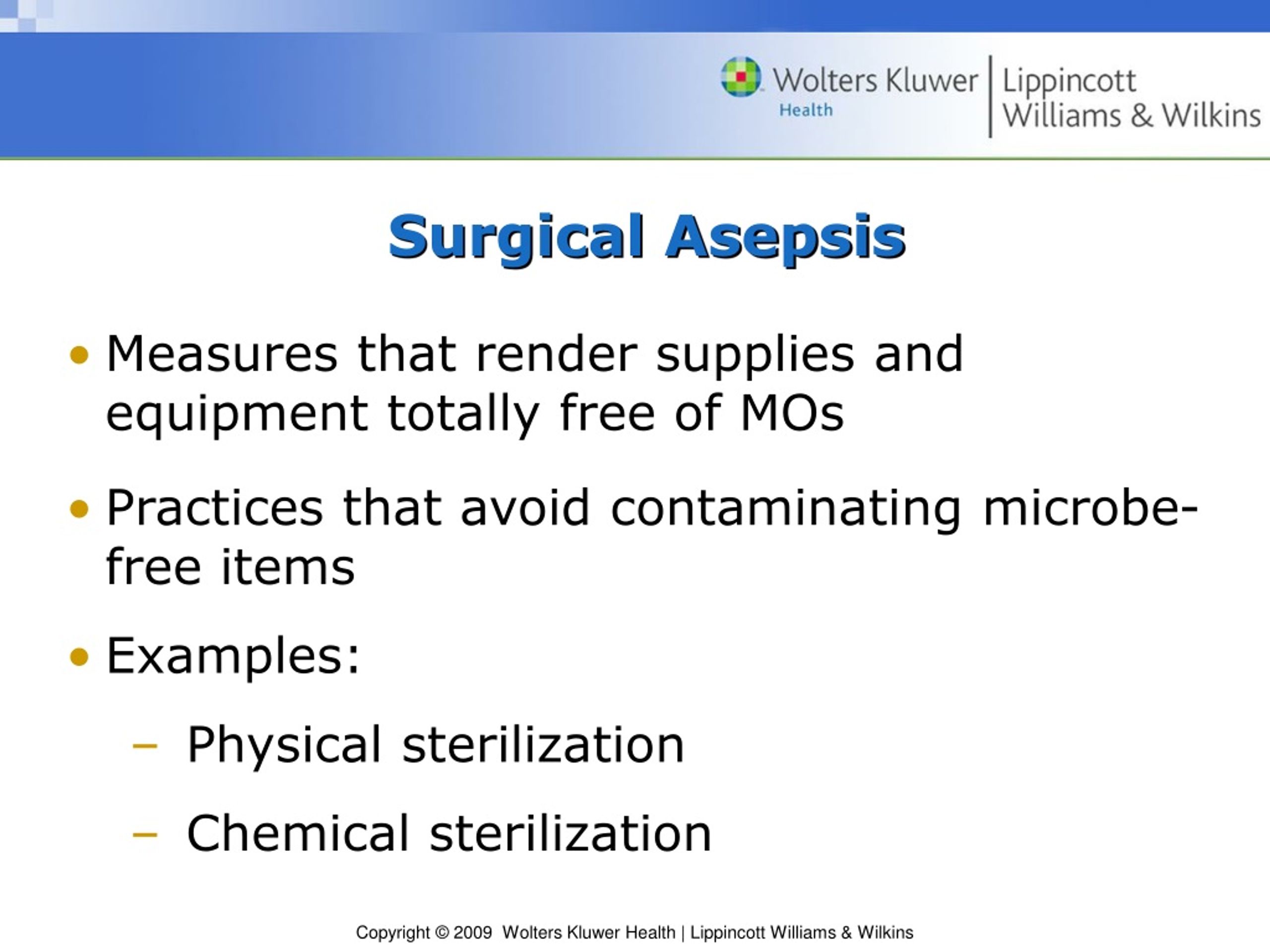
Operating room nurses are responsible for providing a safe, efficient, and caring operating room environment, one in which the surgical team can function with an outcome that patient is as positive as possible. In the past few years, operating room nurses have expanded their practice patterns and responsibilities, enhanced their self-concepts and advanced to the level of perioperative nursing. Introduction The specialty of operating room nursing is coming of age in both image and practice.
#Compare medical asepsis and surgical asepsis professional#
Adhering to proper asepsis protocols is essential for any healthcare professional in order to ensure the safety of their patients.1. On the other hand, Surgical Asepsis is used to prevent the spread of microorganisms during a surgical procedure and requires the use of sterile techniques and materials. Medical Asepsis is used to prevent the spread of microorganisms within a healthcare environment and does not involve the use of sterile techniques or materials. In conclusion, Medical and Surgical Asepsis are two important concepts in healthcare that are often confused with each other. It is also important to understand the advantages and disadvantages of each technique to ensure that the proper technique is being used in the proper setting. It is important to understand the differences between Medical and Surgical Asepsis and to know when to use each one. Importance of Adhering to Asepsis ProtocolsĪdhering to proper asepsis protocols is essential for any healthcare professional in order to ensure the safety of their patients. Additionally, it is not suitable for all medical settings. It also requires more specialized equipment and can be more time consuming. The main disadvantage of Surgical Asepsis is that it is more expensive than Medical Asepsis. Additionally, it is not suitable for more invasive medical procedures. It also requires less specialized equipment, which increases the risk of contamination. The main disadvantage of Medical Asepsis is that it is less effective at preventing contamination than Surgical Asepsis. Additionally, it requires the use of specialized equipment and sterile techniques, which helps to reduce the risk of infection. It also is more reliable and can be used in more invasive medical procedures and surgeries. Surgical Asepsis is more effective at preventing contamination than Medical Asepsis.

Additionally, it can be used in a variety of medical settings, including outpatient clinics, hospitals, and doctor’s offices.

It also is less time consuming and does not require specialized equipment. Medical Asepsis is less expensive than Surgical Asepsis, which makes it the preferred method in most healthcare settings. Medical Asepsis is used to prevent the spread of microorganisms in a healthcare environment and does not involve the use of sterile techniques or materials.

The primary difference between Medical and Surgical Asepsis is the level of contamination prevention. Difference between Medical and Surgical Asepsis Additionally, all personnel must adhere to strict hand-washing protocols. All surfaces must be properly cleaned and sterilized before and after the procedure, and all instruments and materials must be sterilized with an approved sterilizing agent. These include the use of sterile gowns, masks, and gloves.

It involves more stringent rules and procedures than medical asepsis. This technique focuses on preventing the spread of microorganisms within the surgical environment. It is typically used in more invasive medical procedures and surgeries. Surgical Asepsis, also known as sterile technique, is a higher level of asepsis. In addition, it also involves proper disposal of potentially infectious materials. These include proper hand washing, wearing gloves and masks, and using sterilized equipment. It involves a number of rules and procedures to ensure that cross-contamination does not occur. Medical Asepsis is typically used in healthcare settings such as clinics, hospitals, and doctor’s offices. Medical Asepsis, also known as clean technique, is the practice of preventing the spread of microorganisms within a healthcare environment.


 0 kommentar(er)
0 kommentar(er)
